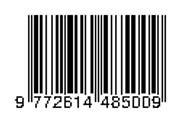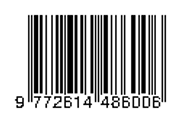
POTENTIAL OF 77,78 mW RED DIODE LASER FOR PHOTODYNAMIC
Abstract
A laser is a light source that uses for any kinds of medical application. Diode Laser is one laser type using in the medical application such as Photodynamic Therapy and Photodynamic inactivation. Photodynamic Therapy is one of non-invasive therapy using for many therapies such as antimicrobial therapy, rejuvenating skin therapy, anti-aging skin therapy, etc. This therapy is using a light source with specific characteristics of wavelength in some case are using Light-sensitive molecules. This research aims to determine the potential of the diode laser for photodynamic therapy instrument. Diode Laser with wavelength value 660nm is Red Laser Diode that has main power output 79,4 mW. The application was using 1 cm clearance with the 30s of time exposure. The result showed that for Diode Laser (λ) 660nm using 7,8x10-2 W input power produce 77,78 mW output power; has operational temperature 53.56oC and light beam 4.2 mm2.
DOI : https://doi.org/10.26905/jeemecs.v2i2.3254
Keywords
Diode Laser, Light Instrumen, Photodynamic, Photoinactivation.
Full Text:
PDFReferences
D. Bäuerle, Laser Processing and Chemistry. 2011.
B. Febrinda Hidayatulail, M. Yasin, and S. Dyah Astuti, “Photodynamic Inactivation for Phatogenic Bacteria: Adding Chlorophyll and Oxygen,” 2018.
Z. Oruba, P. Łabuz, W. Macyk, and M. Chomyszyn-Gajewska, “Antimicrobial photodynamic therapy-A discovery originating from the pre-antibiotic era in a novel periodontal therapy,” Photodiagnosis and Photodynamic Therapy. 2015.
S. Siswanto, D. A. Prasetya, N. Rachman, and B. F. Hidayatulail, “Pengendali Robot Beroda Berbasis Sensor Telemetri Voice Pattern Recognition,” JASIEK (Jurnal Apl. Sains, Informasi, Elektron. dan Komputer), 2019.
P. N. Prasad, “Nanotechnology for Biophotonics: Bionanophotonics,” in Introduction to Biophotonics, 2004.
I. Mujahidin, S. H. Pramono, and A. Muslim, “5.5 Ghz Directional Antenna with 90 Degree Phase Difference Output,” 2018.
N. S. Anderson, D. A. Norman, and S. W. Draper, “User Centered System Design: New Perspectives on Human-Computer Interaction,” Am. J. Psychol., 2006.
A. V. Kachynski et al., “Photodynamic therapy by in situ nonlinear photon conversion,” Nat. Photonics, 2014.
M. T. Prakarsa, D. Wahyuni, N. Rachman, and I. Mujahidin, “Optimasi Sistem Komunikasi Dari HT Dengan HP Dalam Pelaksanaan Tugas Operasi Tni Ad Menggunakan Metode DTMF,” JASIEK (Jurnal Apl. Sains, Informasi, Elektron. dan Komputer), 2019.
T. Maisch, “Anti-microbial photodynamic therapy: Useful in the future?,” Lasers in Medical Science. 2007.
I. C. J. Zanin, R. B. Gonçalves, A. B. Junior, C. K. Hope, and J. Pratten, “Susceptibility of Streptococcus mutans biofilms to photodynamic therapy: An in vitro study,” J. Antimicrob. Chemother., 2005.
L. Brancaleon and H. Moseley, “Laser and non-laser light sources for photodynamic therapy,” Lasers Med. Sci., 2002.
C. M. Pitsillides, E. K. Joe, X. Wei, R. R. Anderson, and C. P. Lin, “Selective cell targeting with light-absorbing microparticles and nanoparticles,” Biophys. J., 2003.
H. S. Qian, H. C. Guo, P. C. L. Ho, R. Mahendran, and Y. Zhang, “Mesoporous-silica-coated up-conversion fluorescent nanoparticles for photodynamic therapy,” Small, 2009.
DOI: https://doi.org/10.26905/jeemecs.v2i2.3254
Refbacks
- There are currently no refbacks.
JEEMECS (Journal of Electrical Engineering, Mechatronic and Computer Science) |
Mailling Address:
|










